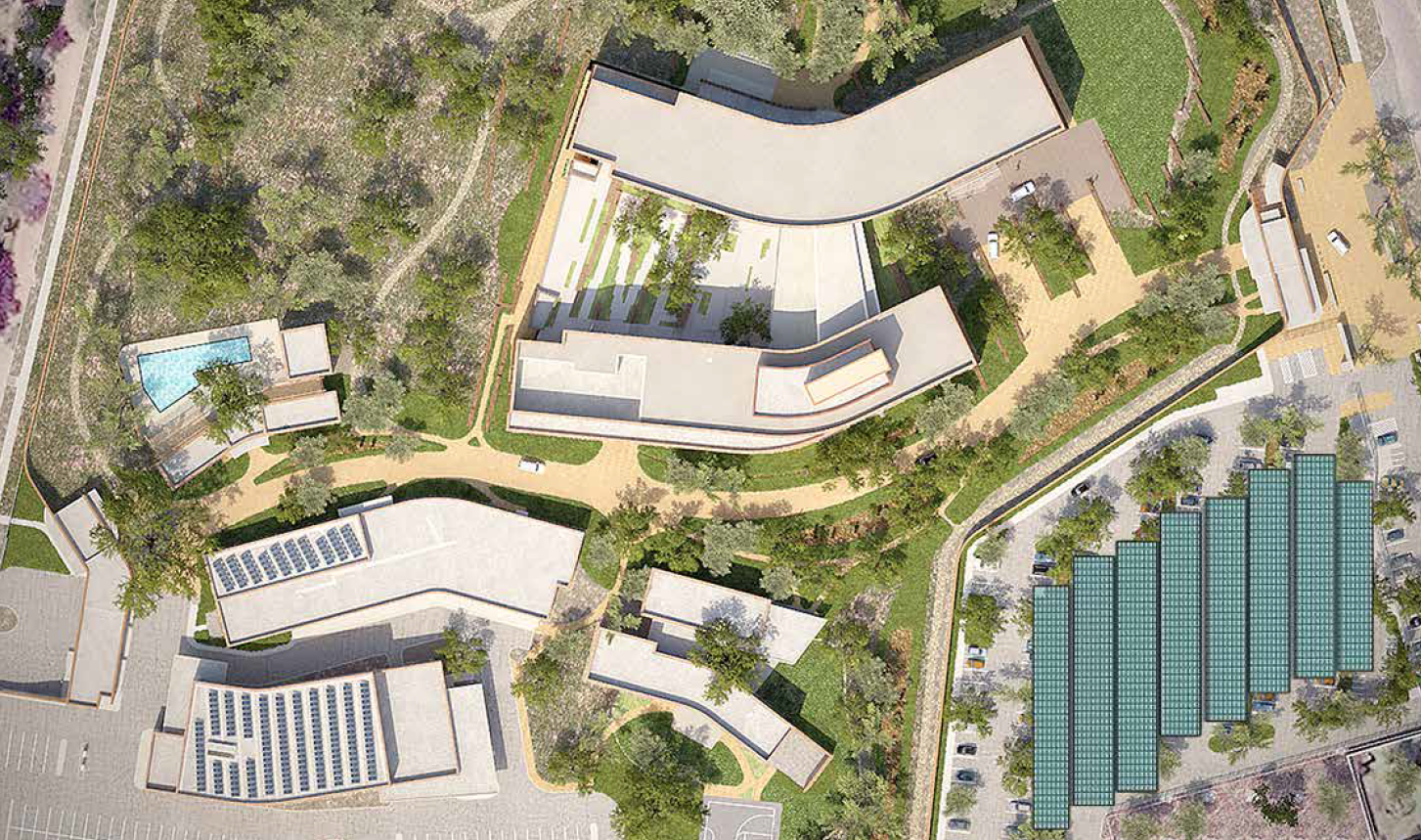U.S. Embassy Microgrid Project, Zimbabwe
The U.S. embassy compound in Harare is a multi-building campus that receives intermittent power from the local utility due to the utility’s limited generation capacity. The local utility shuts down power to the compound for 17 hours a day to supply power to the nearby mines. During the daily power outage, the compound receives its power from an onsite 2,000 kW diesel generator plant that operates more than 6,000 hours per year.
To reduce the generator plant runtime and the amount diesel fuel consumed at the site, Cushing Terrell designed a 1,000 kW parking lot canopy photovoltaic (PV) array and coupled it with a 2,800 kWh lithium ion battery energy storage system. The system is configured to utilize the PV array and battery system to supply power to the compound during the daily utility power outage. At night, the batteries are charged by utility grid power when it’s available. The microgrid controller included with this system manages the energy resources at the site and dictates the optimum time to charge and discharge the batteries and start and stop the diesel generators.
The new solar PV system and battery storage system will reduce the diesel generator run time by more than 5,600 hours per year, which is a significant reduction in diesel fuel and emissions at the site.
Zimbabwe is a very arid, dusty climate. To avoid PV production losses, each PV array is equipped with a robotic cleaning system. These robots use a rotating microfiber cloth that periodically sweeps dust from array.
System Information
- Annual generation: 1,781,478 kWh
- 1,000 kW DC PV array
- 2,800 kWh battery energy storage system
- 1,412 solar PV panels
AGENC(IES) SERVED
U.S. State Department
LOCATION
Harare, Zimbabwe
SERVICES
Bridging Documents
Electrical Engineering

